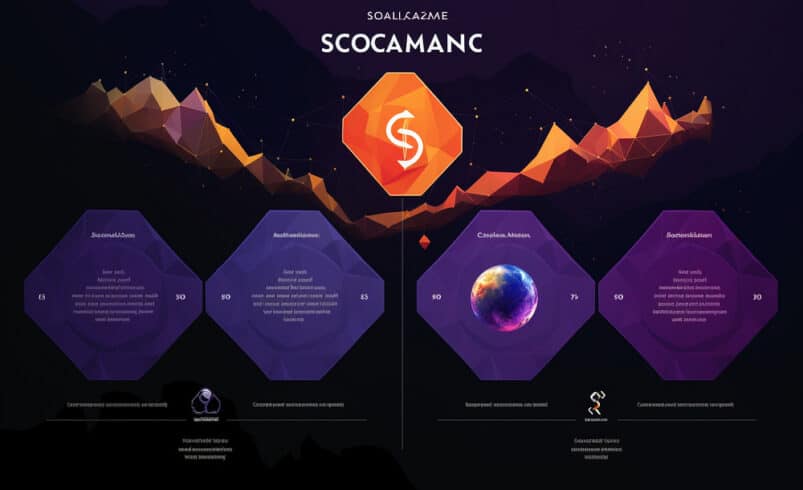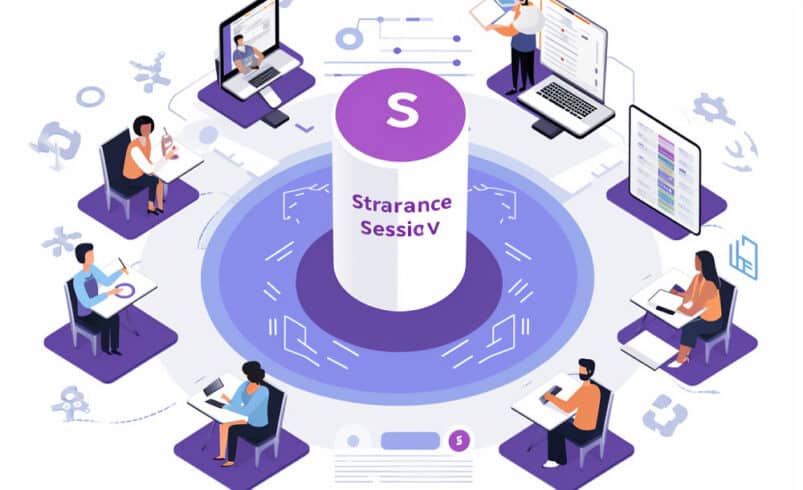Solana Or Avalanche: A Deep Dive Into Two Leading Blockchains

Table of Contents
In blockchain technology, innovation is constant, with new platforms emerging to challenge established players. Recently, Solana and Avalanche are two such platforms that have garnered attention for their promising features and potential to disrupt the status quo.
This guide looks into Solana and Avalanche, comparing their architectures, consensus mechanisms, tokenomics, ecosystem growth, and performance attributes.
Background And Overview
Solana is a fast blockchain that uses both Proof of Stake (PoS) and Proof of History (PoH) as its consensus mechanism. This allows transactions to be processed quickly, with up to 65,000 per second (TPS).
SOL, the platform’s governance coin, can be used for transactions and voting in the network’s consensus process. In contrast, Avalanche is a blockchain that uses a new consensus algorithm, which is a variation on proof-of-stake, to get fast finality and high throughput.
The Platform Chain (P-Chain), the Exchange Chain (X-Chain), and the Contract Chain (C-Chain) are the three blockchains that make up Avalanche. Although they work together, each of them performs different roles in the blockchain. The platform’s native coin, AVAX, is used for fees on transactions and staking and as a basic unit of account on all of the network’s subnets.
Technology Comparison
The technological features of Solana and Avalanche are distinct, offering unique solutions for high-performance decentralized applications. Solana employs a combination of PoH and PoS to achieve high-speed verification of transactions and secure consensus without compromising decentralization.
PoH creates a historical record that enhances efficiency, while PoS ensures network security. On the other hand, Avalanche utilizes its novel Avalanche consensus protocol to achieve quick and reliable consensus through sub-sampled voting.
This protocol allows Avalanche to achieve faster finality and process more transactions simultaneously, contributing to its high throughput. Both Solana and Avalanche use different technologies. However, both are ideal for developing high-performance decentralized apps.
Smart Contract Capabilities
Sealevel, Solana’s smart contract engine, lets smart contracts run in parallel, making it easier to build and use scalable dApps. On its C-Chain, Avalanche supports the Ethereum Virtual Machine (EVM), which makes it easy for developers to move Ethereum dApps over. In addition, Avalanche adds custom blockchain networks, or subnets, which make smart contract distribution more flexible.
Transaction Throughput And Speed
Solana has one of the fastest throughputs among all blockchains. It can handle more than 50,000 transactions per second (TPS) and has closure times of less than one second. Avalanche has a high TPS count in the thousands, completing transactions in less than two seconds.
Tokenomics
Tokenomics is a vital part of knowing how blockchain ecosystems work and how long they can last. Solana’s tokens were sold in private, public, and auction sales, with early users and investors making the most gains.
In contrast, Avalanche set aside many of its tokens for public and private sales. It also set aside tokens for the Avalanche Foundation, community rewards, and airdrops.
Supply Mechanics And Staking Rewards
Solana wants a fixed number of SOL tokens over time, with a circulation supply rate that reduces every year until it achieves this goal. The number of Avalanche tokens available for issuance is limited to make it deflationary. Validators and delegators earn SOL on Solana and AVAX on Avalanche.
Ecosystem Size And Growth
The size and growth of a blockchain’s ecosystem are crucial indicators of its viability and potential for expansion. Both Solana and Avalanche have demonstrated considerable developer activity and support from their respective communities.
Avalanche’s developer-friendly platform and compatibility with Ethereum tools have attracted many contributors. Likewise, Solana has recorded rapid growth with tools like Rust for smart contract development.
Decentralized Applications And Community Support
With an emphasis on DeFi and NFTs, both ecosystems are home to a thriving community of decentralized applications. Hundreds of dApps are available on Avalanche, especially on its C-Chain. Both blockchains have strong communities, with a great deal of support and participation from members.
Performance Analysis
With its unique PoH consensus and PoS features, Solana has demonstrated impressive transaction speeds, processing up to 65,000 transactions per second (TPS). Also, its exceptional throughput makes Solana rank among the fastest blockchain systems.
Similarly, the Avalanche network has a high throughput, processing about 4,500 TPS. Even though this number may appear lower than Solana’s TPS count, Avalanche can reach sub-second finality thanks to its peculiar consensus protocol. As a result, transactions are fully confirmed one second after submission, improving transaction efficiency and user experience.
Conclusion
Developers’ preferences will be a crucial reason to choose either Solana or Avalanche blockchain, as they’re both similar in many ways, even though Solana has a slight edge over Avalanche in some of its capabilities.
Time Crypto Market offers content visibility for dozens of crypto enterprises, and you can be a part of our network! Reach out to us on our telegram chat for inquiries. The nature of cryptocurrencies is highly unpredictable; always perform your due diligence before any investment. Several articles on our site come from guest contributors or are commissioned pieces, not originating from Time Crypto Market's in-house writers. The perspectives shared in these articles might not necessarily align with those of Time Crypto Market. We do not assume responsibility for the veracity, caliber, promotions, offerings, or any other elements presented on our platform. Consult our comprehensive terms of service and disclaimer for more details.








